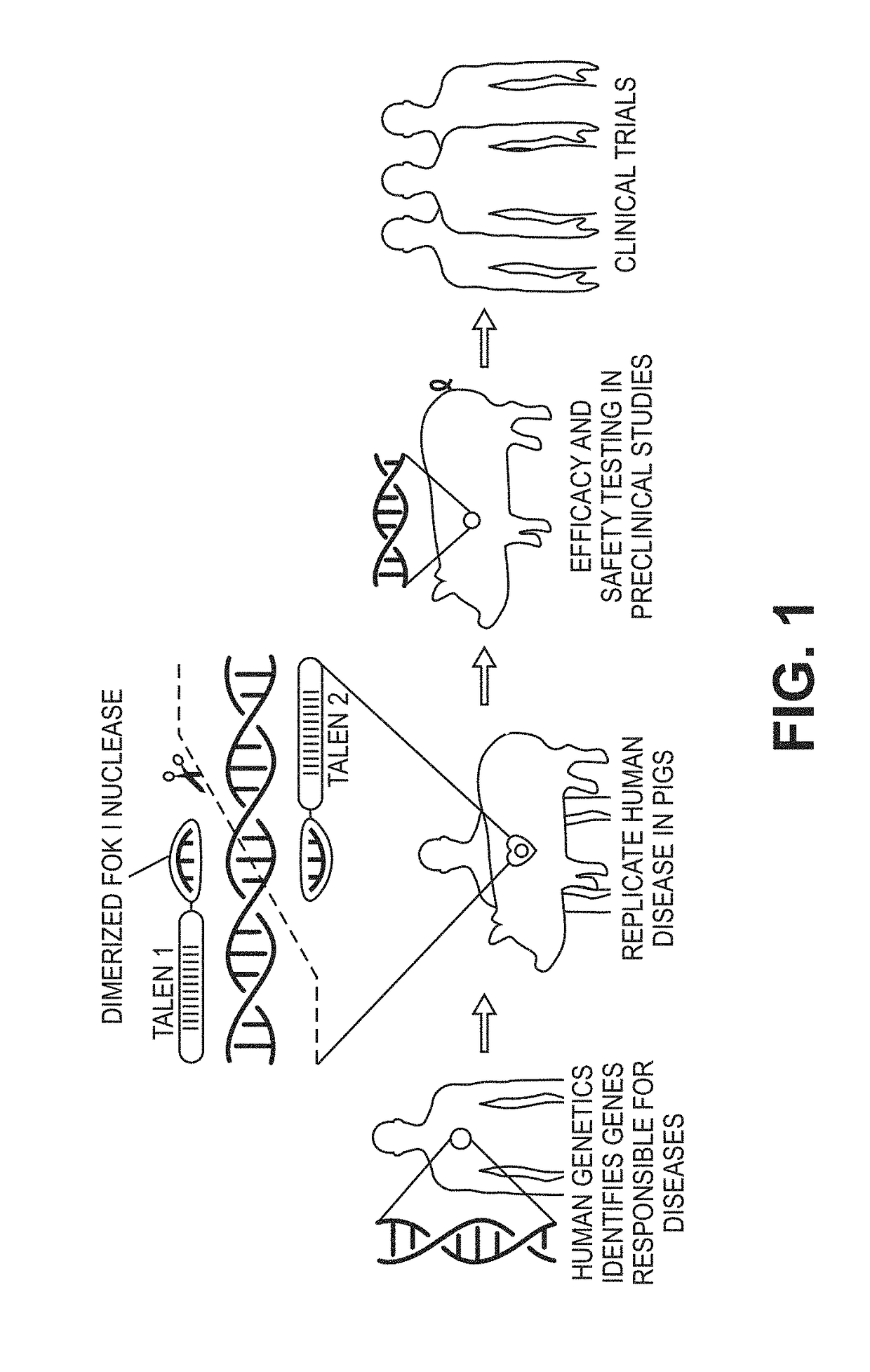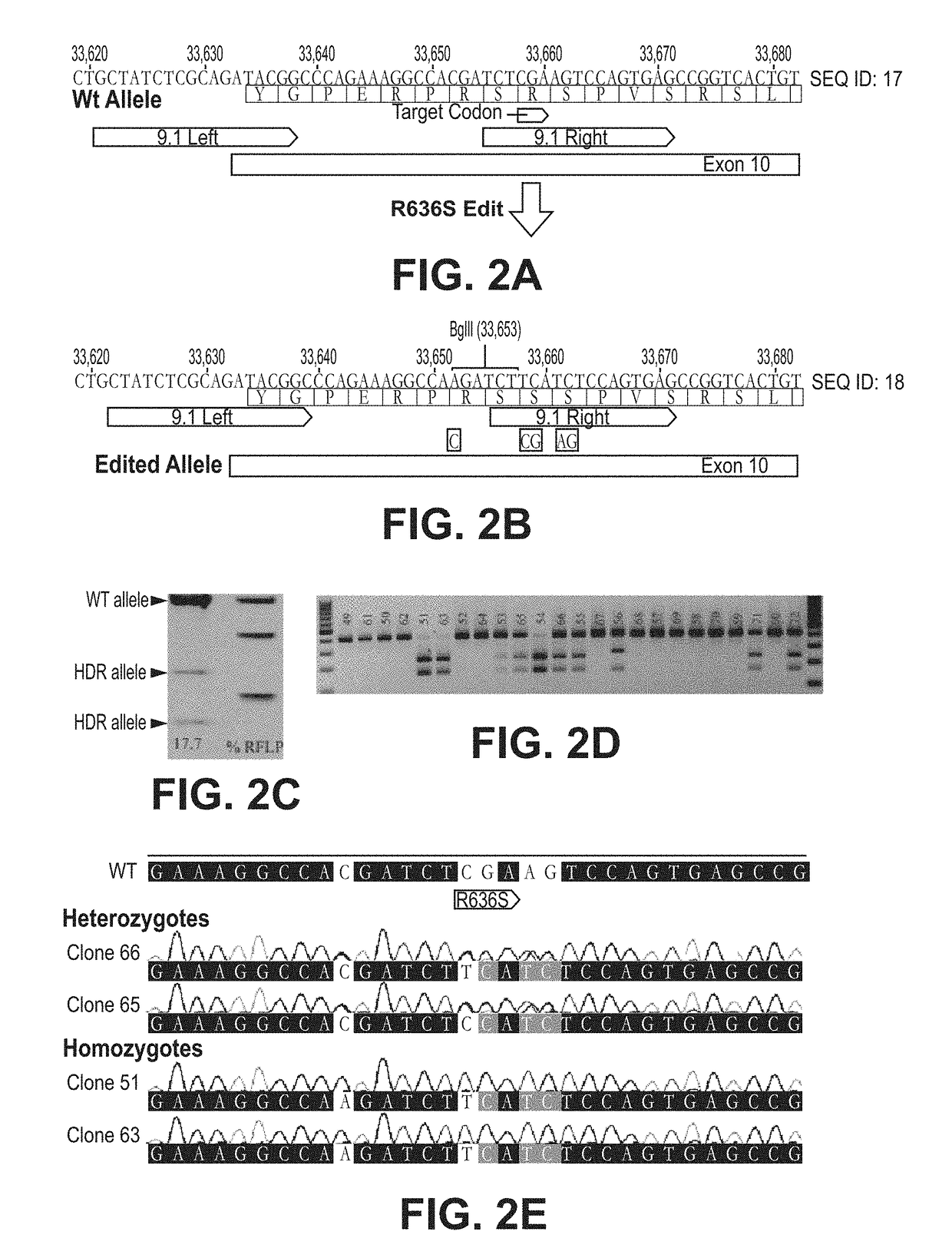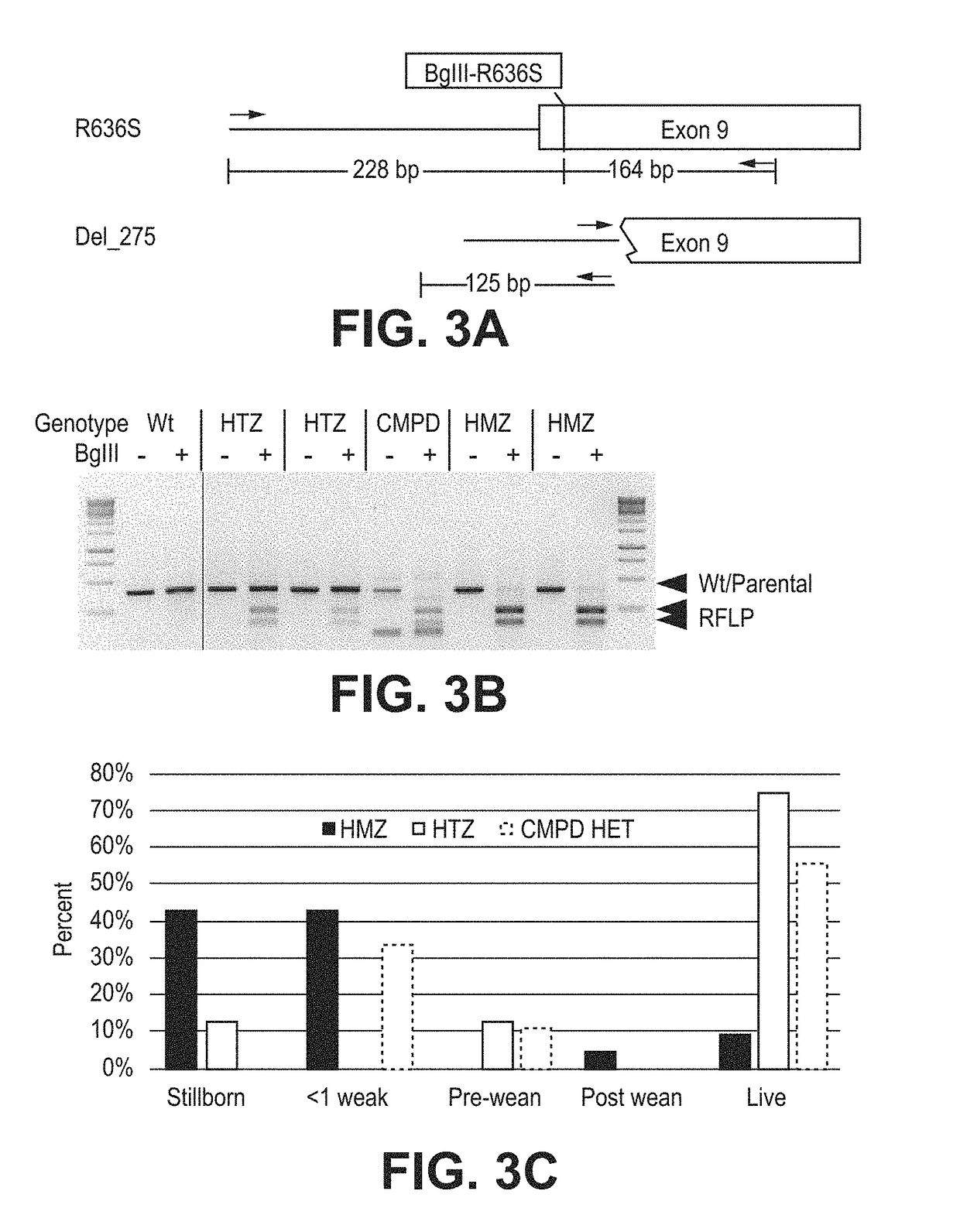Animal models for cardiomyopathy
- Summary
- Abstract
- Description
- Claims
- Application Information
AI Technical Summary
Benefits of technology
Problems solved by technology
Method used
Image
Examples
example 1
RBM20 Mutational Hotspot in Swine
[0162]The inventors have developed RBM20-R636S homozygotes and heterozygotes swine that recapitulate dose-dependent genotype / phenotype clinical endpoints. As predicted, DCM is more severe in the homozygotes with a high rate of neonatal mortality or early onset of cardiomyopathy mimicking pediatric disease [2]. The inventors have played a key role in defining the molecular etiology of DCM in RBM20 deficient model systems [3, 8], and are uniquely positioned with preclinical assessment of porcine-induced cardiomyopathies [9]. Using these methods and tools, the inventors can accelerate the discovery and translation of novel therapeutics for HF by establishing a reproducible large animal genetic model with a clinically relevant phenotype by following the Examples as discussed below.
Characterization of Heart Failure Progression in RBM20-R636S Gene Edited Conventional Swine.
[0163]12-14 offspring from conventional R636S mutant swine are evaluated with wild t...
example 2
Human R636S Mutation in Porcine Cells by Gene Editing
[0165]The inventors chose to mimic the R636S mutation in swine due to the severity and predictability of clinical cohorts. TALENs were designed to the wild type sequence such that the binding site of the right monomer based on an innovative design strategy for introgression SNP edits (FIG. 2A-2E). The repair template directs nucleotide changes to code for the R636S, and also silent mutations to create a novel BglII restriction site for restriction fragment length polymorphism (RFLP) genotyping. The resulting edited allele (FIG. 2A-2E) has four novel SNPs; hence, will be no longer be a suitable substrate for TALEN cleavage. This design is the product of testing several iterations of repair template / TALEN combinations to maximize efficient HDR without introducing confounding indels on the edited allele, a common occurrence in TALEN or CRISPR HDR [31].
[0166]Whereas use of TALEN or CRISPR nickases would theoretically prevent this prob...
example 3
[0168]It is recognized that the success rate of cloning was stochastic and could be further confounded by unknown severity of the HF phenotype. This possibility was addressed as follows: 1) specifically chose to create pools of both HTZ and HMZ clones where it is expected that the latency of disease to be much greater in the HTZ animals and, 2) several positive colonies from a successfully cloned donor protects from the significant variation in the success of somatic cell transfer from individual clones [32]. The inventors have successfully utilized this approach for development of LDLR, APC and DAZL gene-edited pigs [31, 33]. Pools of RBM9 and RBM11 (Table 2—denoted with asterisk) were cloned and the resulting embryos were transferred to four synchronized recipients each. Ten of the twelve recipients were pregnant at day 30 of gestation, and eight pregnancies went full term. From the HMZ pools, a total of 29 piglets were farrowed, and from the HTZ pool, ...
PUM
 Login to View More
Login to View More Abstract
Description
Claims
Application Information
 Login to View More
Login to View More - R&D
- Intellectual Property
- Life Sciences
- Materials
- Tech Scout
- Unparalleled Data Quality
- Higher Quality Content
- 60% Fewer Hallucinations
Browse by: Latest US Patents, China's latest patents, Technical Efficacy Thesaurus, Application Domain, Technology Topic, Popular Technical Reports.
© 2025 PatSnap. All rights reserved.Legal|Privacy policy|Modern Slavery Act Transparency Statement|Sitemap|About US| Contact US: help@patsnap.com



